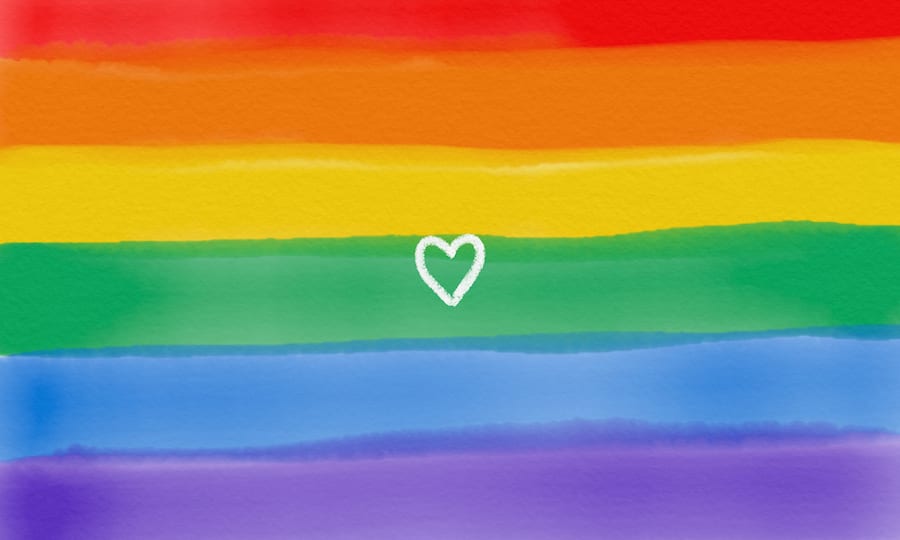Pride Month: the origin story

Every June in the US (and in locations around the world), lesbian, gay, bisexual and transgender communities join forces for Pride Month, a monthlong celebration of self-affirmation, love, diversity, dignity, equality, acceptance, and increased visibility for said communities. Oh—and let’s not forget about the unapologetic pride that comes with being true to oneself. That’s at the very heart of Pride Month.

Think of Pride Month as a giant jubilee of huge rallies; exuberant parades; festivities with elaborate costumes, makeup, and glitter; parties; workshops; concerts; and countless other events. Commemorations and memorials are held for members of the community who have lost their lives to hate crimes and HIV/AIDS. Campaigns and rallies promote the history and ongoing stories of lesbian, gay, bisexual, and transgender communities. The month of events culminates on June 28th, which is officially Pride Day, although different communities celebrate it on a variety of dates throughout June.
It’s worth noting that while modern-day Pride schedules do tend to count politically charged protests among their other, more celebratory events, the events that initially instigated Pride in the first place were entirely political in nature.
The origins of Pride
Pride Day officially lands on June 28th because that was when the first Pride march was held in NYC in 1970, exactly a year after police raided the Stonewall Inn, a gay club in Greenwich Village, on June 28, 1969. Although brutal police raids of homosexual hangouts were something of a norm at the time, and although homosexual acts were actually illegal in almost every state, on that particular night, when police commenced the raid by beating people up and attempting to extort money from them, members of the LGBTQ community decided that enough was enough and that they were going to fight back. What resulted was an uprising that would kickstart a new age of resistance: six days of protests and violent clashes with police outside the bar, in neighboring streets, and in the nearby Christopher Park. The Stonewall Riots served as a catalyst for the gay rights movement—both in the US and worldwide.
Among the many leaders of the riots over the course of the week was Marsha P. Johnson, a black, trans, bisexual woman who helped found one of the country’s first safe spaces for transgender and homeless youth, and advocated tirelessly on behalf of sex workers, prisoners, and people with HIV/AIDS. “We were … throwing over cars and screaming in the middle of the street ‘cause we were so upset ‘cause they closed that place,” Johnson told historian Eric Marcus in a 1989 interview. “We were just saying, ‘no more police brutality’ and ‘we had enough of police harassment in the Village and other places.’”
Protestors were very clear in their demands: central among them was the establishment of places where LGBTQ people could go and be open about their sexual orientation without the threat of arrest.
The existence of Pride Day as we know it is commonly credited to bisexual activist Brenda Howard, AKA “The Mother of Pride,” as she helped plan Gay Pride Week and the Christopher Street Liberation Day Parade the year after the riots. The parade evolved into the annual New York City Pride march and served as a catalyst for similar parades and marches across the country and around the world which are held to this day. While the inaugural Pride March saw a crowd of about 3000-5000, the New York Pride Parade was estimated to have drawn over 2 million people in 2019.
For all the empowerment that Stonewall represents for LGBTQ communities to this day, the Library of Congress points out that, “historians have noted that the shift in activism, if Stonewall truly represented one at all, was a shift primarily for white cisgender people, as people of color and gender non-conforming people never truly had the benefit of concealing their marginalized identities.” A great reminder that as always, taking an intersectional approach is vital to supporting any struggle—whether you identify personally or not.
The rainbow flag
Commonly touted as a symbol uniting LGBTQ+ communities, the rainbow flag–a veritable staple among Pride marchers—was popularized by San Francisco artist Gilbert Baker in 1978. It was actually gay politician Harvey Milk who asked Baker, a friend of his, to design an all-encompassing symbol to take to San Francisco’s Pride March that year. Sadly, although he made it to the march, Milk was assassinated later that year by a disgruntled former city Supervisor.

Although the different colors on the flag are commonly associated with diversity, each one also has its own specific (and literal) meaning. Before it was removed, hot pink stood for sex; red signifies life; orange represents healing; yellow champions sunlight; green invokes nature; turquoise gives a shoutout to magic and art; indigo (now royal blue) means serenity; and violet denotes spirit. Today there are also several other flags commonly displayed in the LGBTQ+ community, including the transgender flag, and the pansexual flag.
June is upon us, and as always, the world has never needed a meaningful celebration of diversity as much as it does at this moment. Pride gifts us with the perfect opportunity to honor our differences and join forces colorfully—for the greater good.
Wishing a safe & happy Pride Month to all!